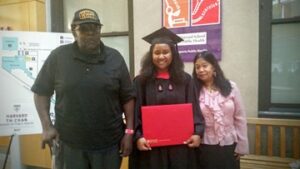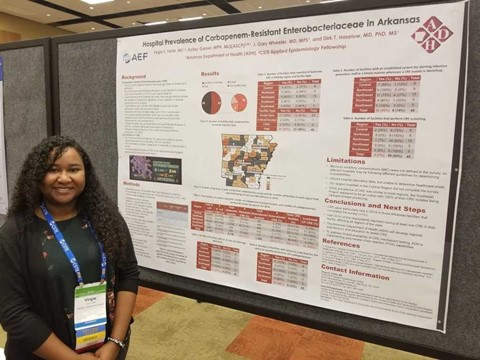Public Health Analyst Series: Virgie’s Journey
For as long as I can remember, my biggest goal in life was to make an impact in people’s lives. In middle and high school, I enjoyed my math and science classes the most. Combined with my desire to help people, I decided early on that becoming a doctor (particularly a pediatrician) would be my goal.
I decided to pursue a biomedical engineering degree with a pre-med concentration at Virginia Commonwealth University (VCU). After spending some time shadowing physicians at a hospital during my freshman year, I realized that medicine wasn’t the right fit for me anymore. I felt I could use my strengths to make a difference in people’s lives in ways other than direct patient care—one where there’s a better work/life balance and fewer years of additional education and training. After my freshman year, I had the opportunity to participate in an undergraduate research program, the Initiative for Maximizing Student Development (IMSD) Scholars Program, which allowed me to work in a research lab under the guidance of a mentor during the summer and part-time during the school year. Being in this program helped me figure out what my true interests were.
One of the best things we got to do as part of the program was attend national and local research conferences. One year, we were able to attend and present our research at the Annual Biomedical Research Conference for Minority Students (ABRCMS). There I met a recruiter from the Harvard School of Public Health (now the Harvard T.H. Chan School of Public Health). This conversation would be the catalyst that changed the trajectory of my career path. This was the first time I was introduced to epidemiology and the public health field. Once I got back home, I did a bit more research into epidemiology and found that this field touched on several of my interests: health, health care, research, potential for policy impact, and using data for action.

While at ABRCMS, the recruiter mentioned that I should apply to Harvard’s Summer Program in Epidemiology. I applied and was chosen to participate in their summer program, so I spent a few weeks in Boston during the summer between my junior and senior year of college. We were split into two groups; our group used Stata (a statistical software used for data analysis) to validate data collected on self-reported body size in comparison to measured Body Mass Index (BMI), and we presented our findings to program staff, students, and professors. The summer program solidified my interest in public health, and I knew that I wanted to pursue a public health career. During my senior year, I volunteered at the VCU Wellness Resource Center as a Peer Health Educator, I enrolled in a statistics course at VCU, and I completed a free, online course in Epidemiology to boost my graduate school applications.

I decided to pursue my Master of Science in Epidemiology degree with a concentration in Infectious Diseases at Harvard. While at Harvard, I participated in a winter field course in São Paulo, Brazil, and I completed a summer internship at a local health department in Massachusetts where I focused on food/grocery store accessibility. After my internship at the local health department, I knew that I wanted to get more experience with applied epidemiology at the local or state level.

Harvard Graduation – Graduation from the Harvard T.H. Chan School of Public Health with my parents, 2015
After earning my master’s, I was selected to participate in the Centers for Disease Control and Prevention (CDC)/Council of State and Territorial Epidemiologists (CSTE) Applied Epidemiology Fellowship Program, a two-year on-the-job training experience for recent graduates at a local or state health agency under the guidance of experienced mentors. I matched with the Arkansas Department of Health (ADH) where I focused on healthcare-associated infections (HAIs) and vaccine-preventable diseases. One of the highlights from my time as a CSTE Fellow in Arkansas was being able to support the response to the state’s largest mumps outbreak. I learned a lot during this fellowship, and I thoroughly enjoyed the work that I did, particularly with HAIs.

It was divine timing that an epidemiologist position with the HAI team at the Virginia Department of Health (VDH) opened up when my fellowship was ending. As the HAI Epidemiologist at VDH, I spent a lot of time analyzing data, creating reports and presentations, providing technical assistance to healthcare facilities, recommending infection prevention and control guidance, and supporting the response to outbreaks. Being a part of Virginia’s COVID-19 pandemic response renewed my passion for public health, but it also highlighted gaps in the system.
I was the HAI Epidemiologist at VDH for over 4.5 years before starting my role as a Public Health Analyst with Lantana, supporting the CDC as a subject matter expert for the National Healthcare Safety Network (NHSN) Antimicrobial Use and Resistance (AUR) Module. As a Public Health Analyst, I can utilize my public health skills, including analysis, quality assurance, and training and education, to ensure that AUR data are submitted using a standardized format and can be used to drive action at the facility, state, or federal level.
